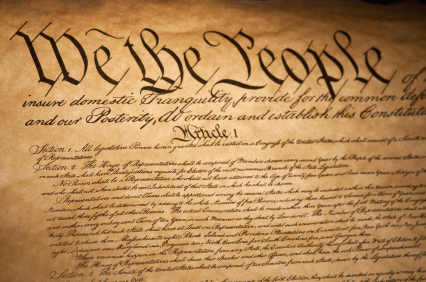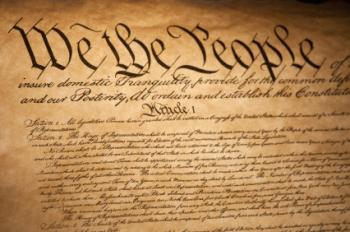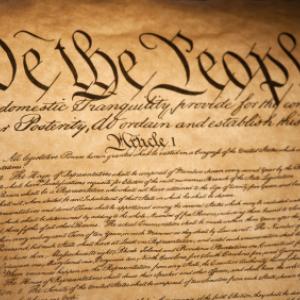Changing the Constitution
Since it was created as the supreme law of the land over two centuries ago, it is critical that the United States Constitution can be altered to address changing circumstances. But how can the Constitution be changed and by whom? The Founding Fathers knew that unforeseen events would require changes to the Constitution, and so provided for its amendment. The amendment process is similar to that used to adopt the Constitution itself, and was intended to be difficult.
The heart of the difficulty lies in obtaining the effective consent of a super majority of Americans. Article V of the Constitution describes the two-step procedure by which it can be amended. The first step is to have an amendment formally proposed in one of two ways. Either a two-thirds majority of both houses of Congress may propose an amendment or two-thirds of the state legislatures may call for Constitutional Conventions to do so. The second step requires a proposed amendment to be ratified either by three-fourths of the state legislatures or by three-fourths of state Constitutional Conventions. (To date, all amendments have been proposed by Congress and all but one have been submitted to the state legislatures for ratification.) Upon ratification by the required number of states (38), the amendment automatically becomes effective.
While more than 11,000 Constitutional amendments have been introduced in Congress over the last 225 years, only 33 have been approved by the requisite two-thirds Congressional majority and sent to the states for ratification. Of those, 27 have been ratified and have become amendments to the Constitution. The first ten amendments were ratified together in 1791 as the Bill of Rights. The remaining 17 were ratified between 1795 and 1992, and address such diverse subjects as due process, the abolition of slavery, voting rights, income tax, presidential term limits, and the distribution and sale of alcohol, among others.
Surprisingly, the amendment that took the longest to be ratified is the most recent; the 27th, which provides that any change in Congressional salaries will not take effect until after the next election. It was proposed in 1789 as part of the Bill of Rights but was not ratified until 1992. Three amendments have been ratified in less than a year (including the 21st which repealed Prohibition), proving that the American people can act quickly when they agree on a good idea.
Many believe that the amendment process was made so difficult as to be practically impossible. Instead, they argue that the Supreme Court can “interpret” the Constitution to address societal change. Over the last 75 years, the Supreme Court increasingly has agreed that it has the power to interpret the Constitution to provide new rights. Examples of such judicially recognized constitutional rights include abortion, privacy and gay marriage.
Others believe that only the people themselves have the power to change the Constitution. They argue that any issue important enough to be addressed by the Constitution must be supported by a broad consensus of the American people to effect a lasting resolution of the matter. And they view a Supreme Court ruling creating a new Constitutional right as an “edict” imposed by a handful of appointed justices (five constitute a majority), which results only in continued turmoil over the issue.
George Washington held strong views on the amendment process to ensure continued respect for the Constitution. In his Farewell Address he said, “The Constitution which at any time exists, till changed by an explicit and authentic act of the whole People, is sacredly obligatory on all.”
Event Date
Address
United States


























